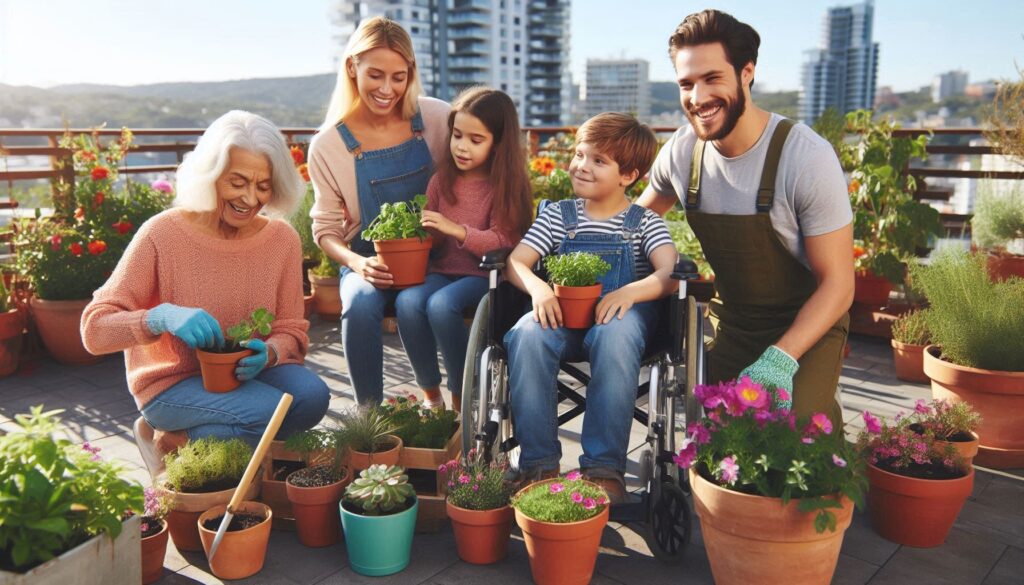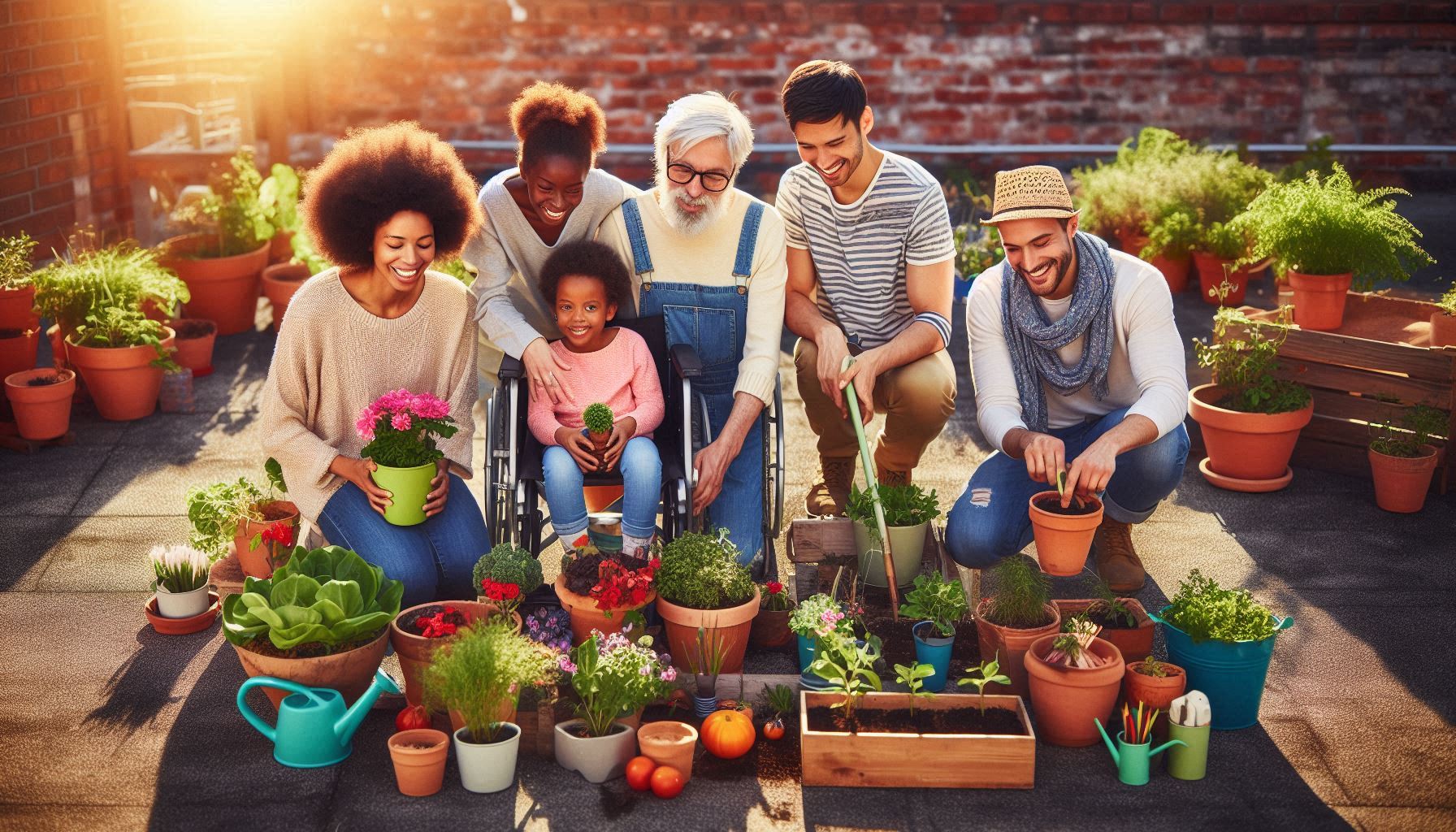Urban rooftop gardening is a growing trend that is transforming city landscapes by utilizing underutilized spaces to grow fresh produce, create green oases, and promote sustainable living. Rooftop gardens offer a myriad of benefits, including improving air quality, reducing urban heat island effect, increasing biodiversity, and providing opportunities for local food production. In this article, we will explore the concept of urban rooftop gardening, its benefits, challenges, best practices, and inspiring examples from around the world.
Benefits of Urban Rooftop Gardening
Environmental Benefits:
- Rooftop gardens help mitigate the urban heat island effect by absorbing heat and providing insulation, reducing the need for air conditioning in buildings and lowering energy consumption.
- Green roofs improve air quality by capturing pollutants, filtering particulate matter, and producing oxygen through photosynthesis, contributing to cleaner and healthier urban environments.
- Rooftop gardens support biodiversity by creating habitats for birds, insects, and plant species, enhancing urban ecosystems and promoting ecological resilience in densely populated areas.
Social Benefits:
- Urban rooftop gardens offer recreational spaces, relaxation areas, and community gathering spots that enhance the quality of life for residents, workers, and visitors in urban settings.
- Rooftop gardening projects provide opportunities for education, skill-building, and community engagement in sustainable agriculture, environmental stewardship, and healthy living practices.
- Green roofs help reduce stress, improve mental health, and promote well-being among urban dwellers by connecting them to nature, greenery, and open spaces in the built environment.
Economic Benefits:
- Rooftop gardens can reduce stormwater runoff, prevent flooding, and mitigate water pollution by absorbing rainwater, reducing strain on municipal drainage systems, and lowering infrastructure maintenance costs.
- Green roofs increase property values, attract tenants, and enhance building aesthetics, marketability, and sustainability credentials, offering financial returns for property owners and real estate developers.
- Urban rooftop gardens create job opportunities, stimulate local economies, and support small-scale agriculture, urban farming, and green business ventures in cities, contributing to economic growth and community resilience.
Challenges of Urban Rooftop Gardening

Structural Considerations:
- Rooftop gardening requires careful assessment of building codes, structural integrity, load capacity, and safety regulations to ensure that roofs can support the weight of soil, plants, and gardening infrastructure.
- Structural engineering, waterproofing, drainage systems, and roof access points may need to be upgraded or installed to accommodate rooftop gardens and prevent water damage, leaks, and structural failures in buildings.
Maintenance and Management:
- Rooftop gardens demand regular maintenance, watering, weeding, fertilizing, and pest control to sustain plant growth, productivity, and health in challenging urban conditions, such as exposure to wind, sun, and pollution.
- Gardeners must address logistical challenges, such as transporting supplies, tools, and compost to rooftop sites, coordinating work schedules, and collaborating with building owners, tenants, and maintenance staff to ensure smooth operations and effective garden management.
Environmental Factors:
- Rooftop gardens are vulnerable to extreme weather events, temperature fluctuations, drought, and pollution, which can stress plants, impact yields, and compromise the resilience and sustainability of urban gardening projects.
- Climate change, air pollution, and environmental degradation pose risks to rooftop ecosystems, such as water scarcity, soil erosion, pest infestations, and plant diseases, requiring adaptation strategies, such as shade structures, irrigation systems, and resilient plant species.
Best Practices for Urban Rooftop Gardening
Site Selection and Design:
- Choose rooftop locations with sufficient sunlight, protection from wind, access to water, and structural support for gardening activities, considering factors, such as roof orientation, slope, height, and proximity to amenities.
- Design rooftop gardens with raised beds, containers, trellises, and vertical planters to maximize space, optimize growing conditions, and enhance aesthetics, functionality, and accessibility for gardeners and visitors.
Soil and Plant Selection:
- Use lightweight, well-draining soil mixes, compost blends, and organic amendments that promote root growth, moisture retention, and nutrient uptake in rooftop gardens, avoiding heavy, compacted soils that impede drainage and restrict plant growth.
- Select drought-tolerant, heat-resistant, low-maintenance plants, such as herbs, succulents, vegetables, and ornamental flowers, that thrive in urban rooftop environments and provide beauty, biodiversity, and food production for gardeners.
Watering and Irrigation:
- Install efficient irrigation systems, such as drip lines, soaker hoses, and rainwater harvesting tanks, to deliver water directly to plant roots, minimize evaporation, and conserve water resources in rooftop gardens.
- Monitor soil moisture levels, adjust watering schedules, and implement water-saving techniques, such as mulching, rain barrels, and greywater recycling, to maintain plant health, reduce water waste, and promote sustainable water management practices.
Pest and Disease Control:
- Practice integrated pest management (IPM) strategies, such as companion planting, beneficial insects, natural predators, and organic pesticides, to prevent pest outbreaks, manage infestations, and protect plants from damage in rooftop gardens.
- Monitor plants for signs of disease, nutrient deficiencies, and environmental stress, such as wilting, yellowing, and stunted growth, and take corrective actions, such as pruning, fertilizing, and soil testing, to maintain plant vitality and resilience in urban rooftop environments.
Community Engagement and Education:
- Engage residents, businesses, schools, and community organizations in rooftop gardening initiatives through workshops, volunteer opportunities, educational programs, and social events that promote environmental stewardship, sustainable living, and food security in urban areas.
- Collaborate with local partners, such as universities, nonprofits, and government agencies, to share resources, expertise, and best practices for urban rooftop gardening, fostering knowledge exchange, capacity building, and collective action for a greener, more resilient cityscape.
Inspiring Examples of Urban Rooftop Gardens
Brooklyn Grange, New York City, USA:
- Brooklyn Grange operates the world’s largest rooftop soil farms in New York City, cultivating organic vegetables, herbs, and flowers on rooftops in Brooklyn and Queens to promote urban agriculture, environmental sustainability, and community engagement.
- With over 5 acres of rooftop gardens, Brooklyn Grange hosts farm-to-table events, educational workshops, and green roof installations, demonstrating the potential of rooftop agriculture to transform urban spaces, build local food systems, and inspire sustainable living practices.
The Sky Garden, London, UK:
- The Sky Garden is a public rooftop garden in London that features landscaped terraces, observation decks, restaurants, and event spaces with panoramic views of the city skyline, offering visitors a unique urban oasis and green retreat in the heart of the financial district.
- Designed with sustainable materials, native plants, and green walls, the Sky Garden showcases the beauty, biodiversity, and ecological benefits of green roofs, inspiring urban residents, tourists, and businesses to embrace green infrastructure and nature-based solutions for a healthier, more livable city environment.
Lufa Farms, Montreal, Canada:
- Lufa Farms operates commercial rooftop greenhouses in Montreal, growing organic produce year-round on urban rooftops and distributing fresh vegetables to local markets, grocery stores, and community-supported agriculture (CSA) subscribers in the region.
- By harnessing sunlight, rainwater, and waste heat from buildings, Lufa Farms produces high-quality, locally grown food in controlled greenhouse environments, reducing food miles, carbon emissions, and water usage in urban agriculture, while demonstrating the potential of rooftop farming to enhance food security, climate resilience, and economic viability in cities.
Urban rooftop gardening offers a sustainable, creative, and transformative approach to greening cities, promoting food security, and fostering community resilience in urban environments. By harnessing the power of underutilized rooftops, diverse stakeholders can collaborate, innovate, and reimagine urban spaces as vibrant, productive, and biodiverse landscapes that benefit people, planet, and prosperity. Through thoughtful design, responsible management, and community engagement, urban rooftop gardens can inspire positive change, cultivate shared prosperity, and harvest the fruits of sustainable living for a greener, healthier, and more resilient urban future.

